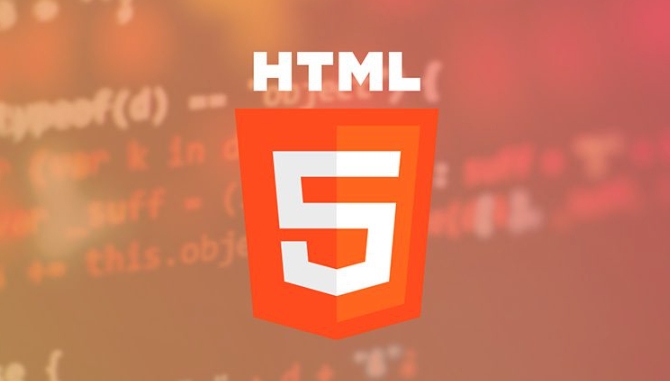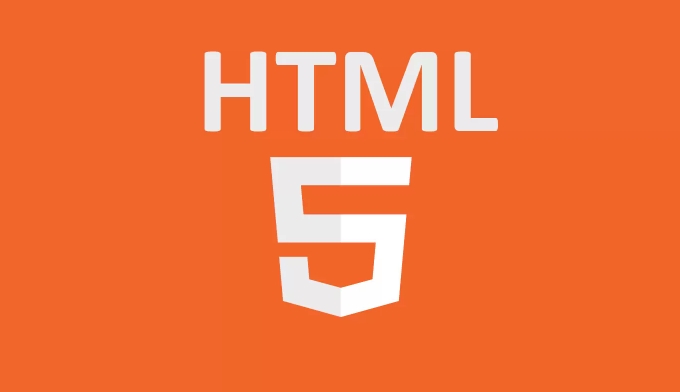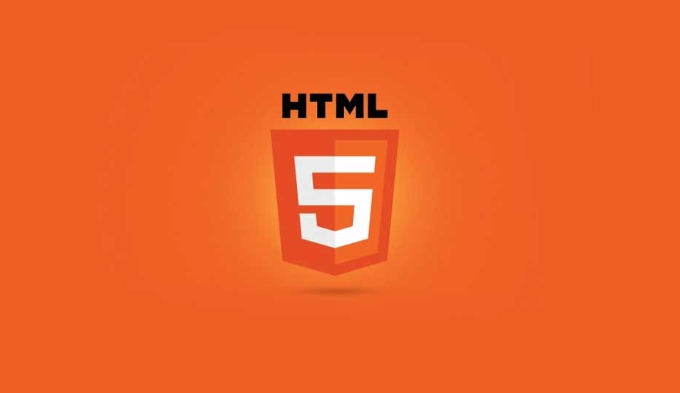To embed and style inline SVG in HTML5, first insert the valid SVG code directly into the HTML document. The steps are as follows: 1. Put the complete

Embedding and styling inline SVGs in HTML5 documents is a flexible way to control the display of vector graphics, especially for scenarios that require dynamic adjustments or styles consistent with page content. Writing SVG code directly into HTML can avoid external file requests and facilitate control through CSS and JavaScript.

How to properly embed an inline SVG
To embed SVG into HTML, you only need to copy the complete <svg></svg> tag and its content to anywhere in the HTML. Be careful to make sure that the SVG code is in a valid XML format, otherwise rendering exceptions may be caused.

Common practices are as follows:
- Place the SVG in a suitable position inside
, such as as a button icon, background element, or chart container - Make sure the namespace declaration (
xmlns="http://www.w3.org/2000/svg") exists, although most modern browsers will automatically complete it - Avoid using certain incompatible SVG features (such as some filters), especially when extensive browser support is required
For example:

<svg width="100" style="max-width:90%" viewBox="0 0 100 100" xmlns="http://www.w3.org/2000/svg"> <circle cx="50" cy="50" r="40" stroke="black" stroke-width="3" fill="red" /> </svg>
This will directly display a red circle on the web page.
Style SVG elements using CSS
After SVG is embedded in HTML, it can be controlled by CSS like ordinary HTML elements. You can style it by class name, ID, or tag name.
Several key points:
- You can use the regular CSS class selector to style elements inside SVG
- SVG properties (such as
fill,stroke) can also be overridden by CSS - Note that the SVG element is an "inline" element by default. You may need to set
display: blockorinline-blockto better control the layout.
For example, if you want all SVG icon colors to follow the theme, you can do this:
.icon {
fill: currentColor;
}Then apply the class in HTML:
<svg class="icon" ...> ... </svg>
In this way, the icon's fill color will inherit the parent text color and achieve a more unified design system integration.
Handle responsive and accessible issues
Responsive design and barrier-free access are also parts that cannot be ignored when SVG becomes part of the page structure.
Consider the following points:
- Set
viewBoxattribute to ensure that SVG is adaptable to different sizes - Avoid fixed width and height, try to use percentage or auto values
- Add appropriate ARIA attributes to enhance accessibility, such as using
role="img"andaria-labelto describe the meaning of images
Example:
<svg role="img" aria-label="Warning Icon" viewBox="0 0 24 24" ...> ... </svg>
Additionally, if your SVG contains interactive features (such as hover effects or click events), it is recommended to test its performance on the touch device and add additional adaptation logic if necessary.
Basically that's it. Rational embedding and styling of SVGs can not only improve page performance, but also bring richer visual expressions. As long as you pay attention to structural integrity and style scope, you can integrate well into the modern web development process.
The above is the detailed content of Embedding and Styling Inline SVG in HTML5 Documents. For more information, please follow other related articles on the PHP Chinese website!

Hot AI Tools

Undress AI Tool
Undress images for free

Undresser.AI Undress
AI-powered app for creating realistic nude photos

AI Clothes Remover
Online AI tool for removing clothes from photos.

Clothoff.io
AI clothes remover

Video Face Swap
Swap faces in any video effortlessly with our completely free AI face swap tool!

Hot Article

Hot Tools

Notepad++7.3.1
Easy-to-use and free code editor

SublimeText3 Chinese version
Chinese version, very easy to use

Zend Studio 13.0.1
Powerful PHP integrated development environment

Dreamweaver CS6
Visual web development tools

SublimeText3 Mac version
God-level code editing software (SublimeText3)

Hot Topics
 Audio and Video: HTML5 VS Youtube Embedding
Jun 19, 2025 am 12:51 AM
Audio and Video: HTML5 VS Youtube Embedding
Jun 19, 2025 am 12:51 AM
HTML5isbetterforcontrolandcustomization,whileYouTubeisbetterforeaseandperformance.1)HTML5allowsfortailoreduserexperiencesbutrequiresmanagingcodecsandcompatibility.2)YouTubeofferssimpleembeddingwithoptimizedperformancebutlimitscontroloverappearanceand
 What is the purpose of the input type='range'?
Jun 23, 2025 am 12:17 AM
What is the purpose of the input type='range'?
Jun 23, 2025 am 12:17 AM
inputtype="range" is used to create a slider control, allowing the user to select a value from a predefined range. 1. It is mainly suitable for scenes where values ??need to be selected intuitively, such as adjusting volume, brightness or scoring systems; 2. The basic structure includes min, max and step attributes, which set the minimum value, maximum value and step size respectively; 3. This value can be obtained and used in real time through JavaScript to improve the interactive experience; 4. It is recommended to display the current value and pay attention to accessibility and browser compatibility issues when using it.
 Adding drag and drop functionality using the HTML5 Drag and Drop API.
Jul 05, 2025 am 02:43 AM
Adding drag and drop functionality using the HTML5 Drag and Drop API.
Jul 05, 2025 am 02:43 AM
The way to add drag and drop functionality to a web page is to use HTML5's DragandDrop API, which is natively supported without additional libraries. The specific steps are as follows: 1. Set the element draggable="true" to enable drag; 2. Listen to dragstart, dragover, drop and dragend events; 3. Set data in dragstart, block default behavior in dragover, and handle logic in drop. In addition, element movement can be achieved through appendChild and file upload can be achieved through e.dataTransfer.files. Note: preventDefault must be called
 How can you animate an SVG with CSS?
Jun 30, 2025 am 02:06 AM
How can you animate an SVG with CSS?
Jun 30, 2025 am 02:06 AM
AnimatingSVGwithCSSispossibleusingkeyframesforbasicanimationsandtransitionsforinteractiveeffects.1.Use@keyframestodefineanimationstagesforpropertieslikescale,opacity,andcolor.2.ApplytheanimationtoSVGelementssuchas,,orviaCSSclasses.3.Forhoverorstate-b
 HTML audio and video: Examples
Jun 19, 2025 am 12:54 AM
HTML audio and video: Examples
Jun 19, 2025 am 12:54 AM
Audio and video elements in HTML can improve the dynamics and user experience of web pages. 1. Embed audio files using elements and realize automatic and loop playback of background music through autoplay and loop properties. 2. Use elements to embed video files, set width and height and controls properties, and provide multiple formats to ensure browser compatibility.
 What is WebRTC and what are its main use cases?
Jun 24, 2025 am 12:47 AM
What is WebRTC and what are its main use cases?
Jun 24, 2025 am 12:47 AM
WebRTC is a free, open source technology that supports real-time communication between browsers and devices. It realizes audio and video capture, encoding and point-to-point transmission through built-in API, without plug-ins. Its working principle includes: 1. The browser captures audio and video input; 2. The data is encoded and transmitted directly to another browser through a security protocol; 3. The signaling server assists in the initial connection but does not participate in media transmission; 4. The connection is established to achieve low-latency direct communication. The main application scenarios are: 1. Video conferencing (such as GoogleMeet, Jitsi); 2. Customer service voice/video chat; 3. Online games and collaborative applications; 4. IoT and real-time monitoring. Its advantages are cross-platform compatibility, no download required, default encryption and low latency, suitable for point-to-point communication
 How to create animations on a canvas using requestAnimationFrame()?
Jun 22, 2025 am 12:52 AM
How to create animations on a canvas using requestAnimationFrame()?
Jun 22, 2025 am 12:52 AM
The key to using requestAnimationFrame() to achieve smooth animation on HTMLCanvas is to understand its operating mechanism and cooperate with Canvas' drawing process. 1. requestAnimationFrame() is an API designed for animation by the browser. It can be synchronized with the screen refresh rate, avoid lag or tear, and is more efficient than setTimeout or setInterval; 2. The animation infrastructure includes preparing canvas elements, obtaining context, and defining the main loop function animate(), where the canvas is cleared and the next frame is requested for continuous redrawing; 3. To achieve dynamic effects, state variables, such as the coordinates of small balls, are updated in each frame, thereby forming
 How to check if a browser can play a specific video format?
Jun 28, 2025 am 02:06 AM
How to check if a browser can play a specific video format?
Jun 28, 2025 am 02:06 AM
To confirm whether the browser can play a specific video format, you can follow the following steps: 1. Check the browser's official documents or CanIuse website to understand the supported formats, such as Chrome supports MP4, WebM, etc., Safari mainly supports MP4; 2. Use HTML5 tag local test to load the video file to see if it can play normally; 3. Upload files with online tools such as VideoJSTechInsights or BrowserStackLive for cross-platform detection. When testing, you need to pay attention to the impact of the encoded version, and you cannot rely solely on the file suffix name to judge compatibility.






